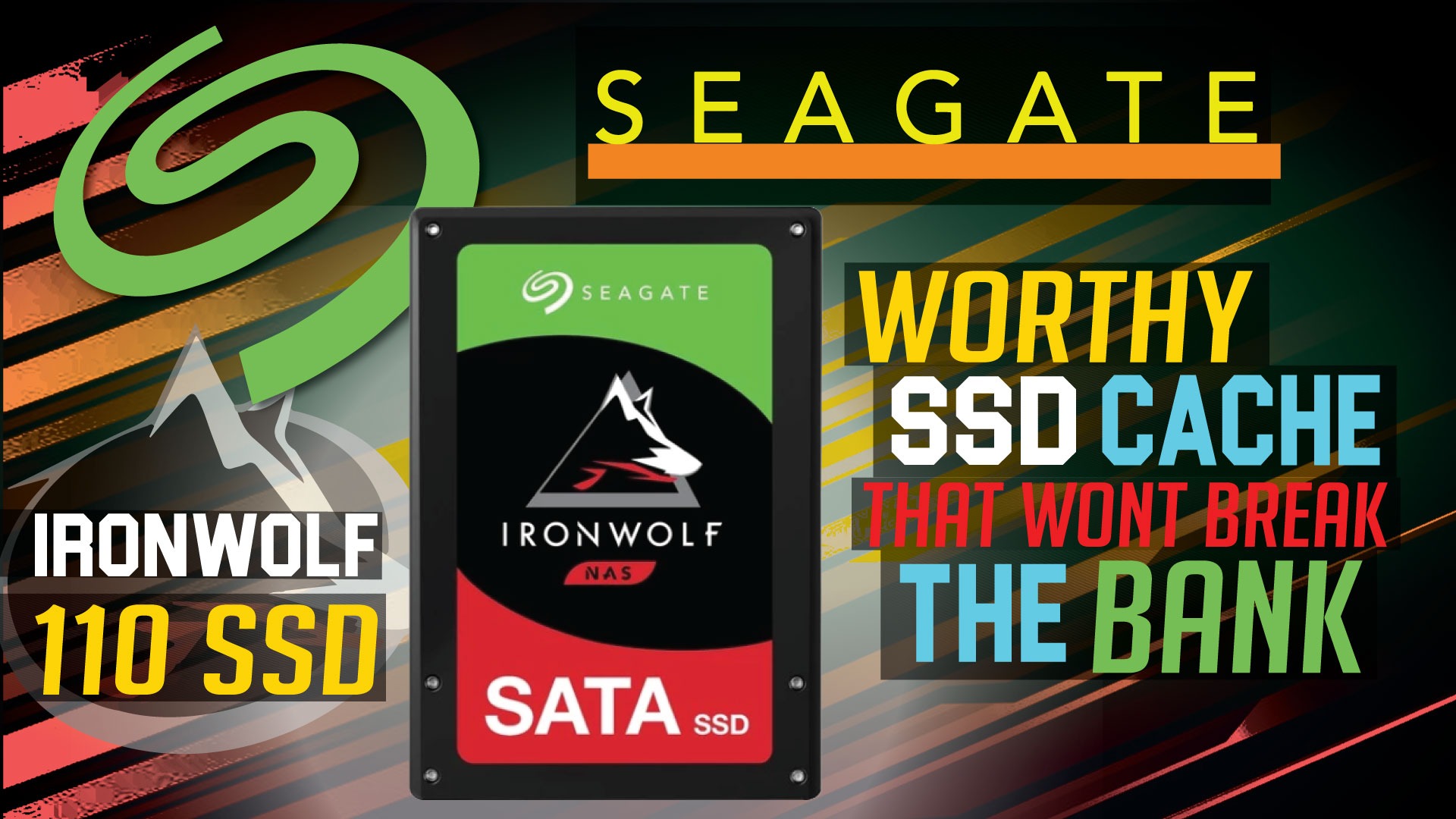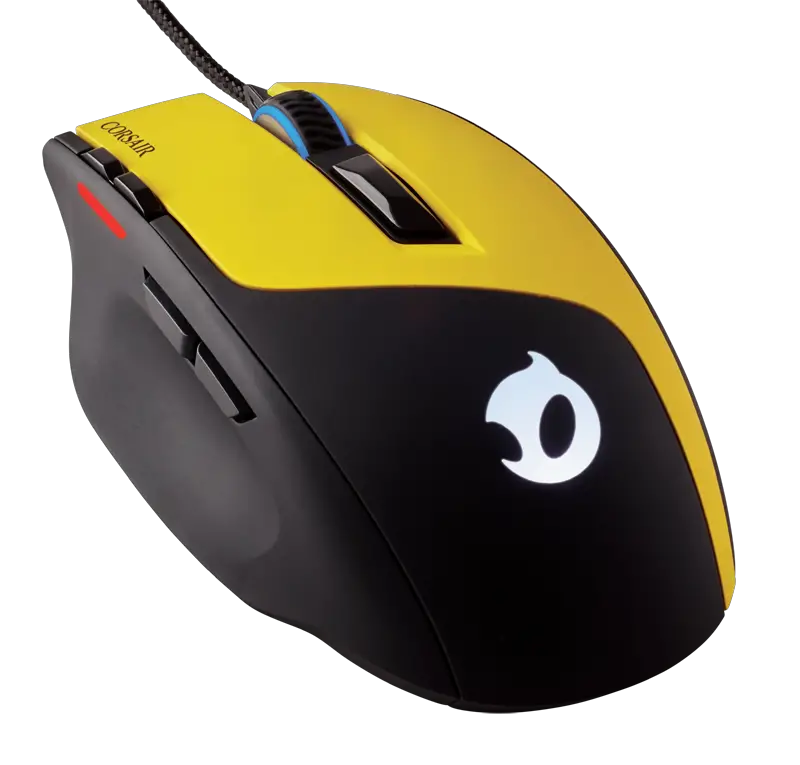
As our sample is not the retail version, we cannot comment on the shipping container that the IronWolf SSD 110 series will come in. Based on past experience however, Seagate does usually combine a slick shipping container with plenty of information that goes over what a specific model is intended to offer. As such it should be easy to figure out if it is right for your needs or not, as well as also protecting its precious cargo while in transit.

When you first look at the IronWolf SSD 110 series do not be shocked when you find an ‘old school’ SATA power+data ports instead of SAS or U.2 or M.2 interface. This is because this series is meant for Network Attached Storage. NAS devices typically come in three flavors. Those that are Serial Attached SCSI based, those that use SATA, and NVMe / PCIe oddities. As the IronWolf SSD 110 models are orientated more towards SOHO and SMB it should come as no surprise that it uses SATA and not SAS (let alone dual SAS ports) or M.2.
This of course does limit sequential performance to about 550MB/s or so. This is a non-issue. Even after all these years 1Gigbit Network Interface Controllers are the norm. Very few small or even medium sized business have invested in 10Ggiabits/s infrastructure. Those that have, usually have gone for single or dual SAS (aka SAS 12Gb/s) based storage servers with onboard PCIe ports for high end NVMe drives… and therefore are not the IronWolf SSD 110’s target demographic.

Obviously even one modern HDD can saturate this bus, so instead of shear speed the IronWolf SSD 110 is meant to bring performance stability to a NAS and do so without breaking the bank. This is because Hard Disk Drives are great(ish) at very low queue depths, but when more than one or two people are accessing the NAS at the same time performance drops off precipitously. Even adding in more HDD’s to a RAID array is more of a band-aid solution. A SSD acting as a caching device on the other hand eats deep queue depths for breakfast. Even at a shallow queue depth, the small file performance a single SSD can bring to a NAS’ RAID array is significant. Significant enough that the Network bus itself is going to be the bottleneck and not the number of I/O requests or size of the data.

The next thing you will notice with the IronWolf SSD 110 – even the smallest 240GB capacity model – is it is unusually heavy. It may not be as heavy as a brick, but it does put the typical 2.5-inch SSD to shame in the weight department. This is because the chassis is much more robust than usual. Though the extra thickness is not precisely there so as to allow the drive to ‘take a beating’. Instead the extra thickness is there to increase the thermal mass of the drive, as the chassis is meant to act as a heat spreader. A heat spreader that is actively cooled by the NAS itself and thus can be considered a heat sink.

Further reinforcing this opinion is once you crack open the IronWolf SSD 110 and look inside the internal design is also unusual. While some SATA Solid State Drives do indeed have the occasional heat pad to connect the hot running components to the metal chassis, this is the first consumer orientated SSD that not only has each and every Toshiba BiCS 3 TLC NAND IC’s covered in either a heat pad or TIM, but it also uses Thermal Interface Material to connect the controller to the chassis.
With proper cooling this means the NAND will not only run cooler (and will not be thermally throttled by the controller) but the controller itself can run faster than usual. Seagate is mum on the precise details of the IronWolf SSD 110’s controller, but it is a Seagate ‘in-house’ design that obviously has its roots firmly planted in the SandForce IP that Seagate acquired. Put another way this multi-core controller is a high-performance controller that is almost wasted inside a SATA based model. We say ‘almost’ as the IronWolf SSD 110 series is meant for NAS devices and as such deeper queue depth performance is paramount… and this drive will have that in spades.

To further help ensure peak performance Seagate has included four very nice tweaks. Tweaks that will not only increase performance but also further increase durability (and is the reason why the smallest 240GB IronWolf SSD 110 boasts an impressive 438TB write endurance… or 239.8GB per day for five years straight). The first is what Seagate calls DuraWrite. At its heart this is a pseudo-SLC cache buffer; however, unlike most TLC solid-state drives which use a fixed capacity for their pseudo-SLC cache, DuraWrite is a complete floating pseudo-SLC cache buffer that will use every bit’s worth of free space on the drive. Thanks to 16GB (on the 240GB capacity model) worth of over-provisioning this buffer will always have at the very least 16GB worth of TLC NAND to use as a SLC-buffer (of aprx 5.33GB in size as each bit of ‘SLC’ requires the full 3bit TLC cell to store one bit of data).
The next tweak is also rather interesting, albeit not unique. Via SeaTools administrators can further change the size of the over-provisioning. For example, you can easily convert this into a “200GB” drive with 56GB set aside for over-provisioning (or 18.7GB for DuraWrite). This customization allows administrators to tweak performance stability and ensure that even when heavily used the SSD Cache drive (aka IronWolf SSD 110) will not have random slow downs from a cache buffer not large enough to handle the real-time tasks it encounters. This will also further increase the write durability of the drive, which has its write endurance spec based upon 16GB of over-provisioning (in the 240GB model).

The last is highly, highly unusual outside of Enterprise grade SSDs. That of course is the inclusion of capacitors that will provide enough power for the controller to write any ‘in flight’ data to the NAND before doing a graceful shutdown (i.e. data that is in the onboard ram buffer and not been written to the NAND yet). Usually everything but enterprise priced solid state drives rely upon internal ‘software’ solutions to ensure data corruption does not occur during a sudden power outage. Such internal algorithm-based solutions usually work, but not always. Actual capacitors guarantee ‘in-flight’ data is safe and written to the NAND before the drive shuts down. As such this is the gold standard for peace of mind when it comes to NAND drives and highly impressive to see on sub $100 SSD.
Taken as whole the IronWolf SSD 110 is not your typical SATA drive. It is built to a much higher standard. A standard that is pretty much over-kill for home user NAS appliances and will beyond ‘good enough’ for SMB NAS devices. Color us impressed to say the least.










